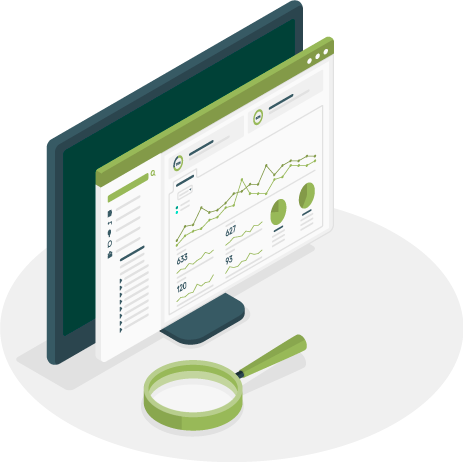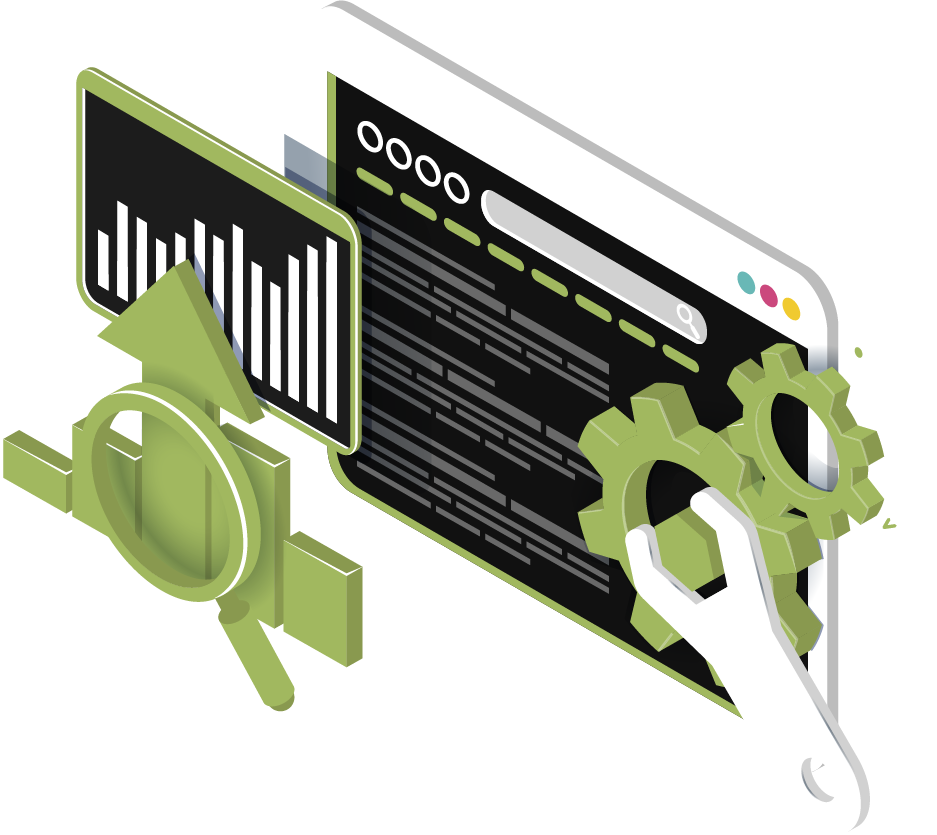
Daniela Zdravkovska
Business Analyst
In our company, high-performing teams are essential in achieving excellence in software development. A software’s performance on the other side, is built on good specifications & project requirements and BAs have their crucial role in defining them. Their task is to collect specifications from all stakeholders to ensure that the proposed software solution meets all of their requirements. Working on the requirements is a model that is built a bit ahead from the development with customer’s consent and active participation in the requirements elicitation phase. BAs work in advance on the scope definition on a project or on a sprint level, presenting them the business scope to the development team that is about to start working on the implementation. So, what does BAs have to do with QAs? The answer is simple: ensuring the solution meets the business requirements! They both test the workable pieces of software that are deployed as well as the final product making sure there is a match between the client’s expectations & needs and the actual result which is about to be delivered on the other side (BA side) and that what delivered to the customer corresponds to what defined in the business requirements documentation (QA side). Although there seem to be two different sides of the story or better said, different approaches to the same thing, still the purpose is the same: making sure that a high-quality software is developed according to the business requirements from the customer.
Requirements & Tests
Tests and requirements may sound different, but they both complement the view of the system that is built. Multiple views of a system—written requirements, diagrams, prototypes, and so on—provide a far richer interpretation of the system than a single representation would. The agile practices show a preference towards writing user acceptance tests, rather than detailed functional requirements. Writing detailed functional requirements accompanied by UAT provides a crystallized understanding of how the system should behave so that the project scope is met and value delivered to the customer and their end-users. When BAs, developers, and customers walk through tests together, they codify a common vision of how the product will function and boost their trust that the specifications are right. Given that many business analysts end up designing parts of the user interface, including them in usability testing is always a good idea. This is where the synergetic approach between BAs and QAs comes into place.

Good requirements are those that are testable
The most important step in solving every problem is to test the proposed solution. As a result, the tested outcomes are seen as a critical project success factor. We must first consider how “testing” fits into the overall picture of device creation lifecycles before we can begin dissecting it. Understanding the business logic means understanding the software’s requirements. As such, when gathering them and during the requirements elicitation phase, we as BAs need to know what good requirements are. Among their correctness, feasibility, clearness, and unambiguity, making sure that every requirement meets a specific business need that can be tested is crucial and it requires a specific criterion against which it can be validated. Requirements meeting the acceptance criteria are essential in avoiding conflicts between the stakeholders or unhappy customers. It turns out that acceptance criteria are kind of an agreement between all the parties. For instance, let’s consider the following requirement: “The system shall be user-friendly”. Fancy as it may sound, the aforementioned statement does not provide a clear and verifiable criterion of what user-friendliness is. We would not know whether to “pass” or “fail” this requirement simply because we miss the criteria against which we can test it! Instead of it, during the elicitation of this requirement, we could establish that the system will provide help screens, dialog boxes, easy menu-driven navigation, etc. Having this in mind, we can understand how important it is for all requirements to be testable.

BA role in different types of testing
Software testing happens at several stages during the implementation of a project. In some of them, the Business Analyst is directly involved, while in others, they are available to clarify requirements.
Integration Testing
During the integration testing, BAs act as support here providing guidance and answering questions that the developers may have.
System Testing
Considering that system testing is about making sure that the system as a whole works according to the specified requirements, the role of the BAs is more engaging. BAs are actively involved in making sure that each component works as per the specifications and that their integration corresponds to the business logic. Consequently, they can get involved in:
- Writing test plans
- Creating and executing test cases
- Review the test cases prepared by the QAs
- Provide guidance and make adjustments where needed according to the outcomes

Regression Testing
Changes in the business requirements mean also changes in the coding, therefore a regression testing is needed to ensure the software meets the business requirements after the modifications. Regression testing is something that a Business Analyst is well-versed in. As BAs, we can choose which important test cases to include in a Regression suite to ensure that all functionality remain intact after a code update.
User Acceptance Testing- UAT
User Acceptance Testing (UAT) is the process of testing an application by users who may be industry subject matter experts or end users to ensure that it meets the intended business needs as well as stakeholder and solution criteria. User Acceptance Testing is perhaps the most critical testing activity, and project managers, company sponsors, and users are all interested in it. This is because UAT is performed on product-like scenarios and environments with potentially real business data, and passing UAT tests indicates that the solution meets the business and solution criteria and is ready for deployment. A business analyst may play a variety of roles in User Acceptance testing, including (but not limited to) the activities mentioned below.
- Carry out customer acceptance testing on behalf of business end users.
- Assist in the creation of UAT test cases that cover the most important market situations and use cases.
- Work along with the software testers to ensure software compliance with the business logic and requirements.
Role-based access Testing
Building tests for role-based security, which restricts user access based on their login, can be one of the most challenging test scenarios. The Roles & Permissions matrix defined by the BAs ensures the integrity of often sensitive information therefore when defining it, BAs usually do the following:
- Identify the key roles within the system
- Discover additional roles that require access to the system
- Discover roles that should not have access to certain system functions and
- Denote who can perform which activities/tasks within the system
Although when writing the business requirements documentation or the subsequent user stories the users’ roles & permissions are clearly to be identified, still testing them out separately is a good approach to ensure that the system works as supposed to. Role-based security testing guarantees that the program enforces user roles, so defining these roles and rights is a natural starting point for the testing process. Upon their definition and successful implementation, checking that they work as intended is essential in avoiding high fault rates or even security breaches. BAs take an important stance in this regard ensuring that not only the business logic is captured, but also that the system provides or restricts the access based on the defined role within the system. System-wise, QAs will be interested to make sure that the system behaves as expected according to the business requirements, while the BAs ensure that the requirements are developed keeping in mind the roles & permissions limits or constraints.
Writing conceptual tests
As mentioned above, writing test cases can also be a part of the business analyst role. In the early development process, BAs can start deriving conceptual tests from the business requirements which later on in the development stages can be used to evaluate functional and non-functional requirements, business models, and prototypes. BA tests normally cover the normal flows of each use case, alternative flows (if any), exceptions, or constraints identified during the requirements elicitation phase. What’s important is for the test to cover both expected behaviors and outcomes, and the exceptions on the other side. Let’s discuss an example I believe we are all familiar with. Consider an application for making reservations similar to Booking. Conceptual tests here would include:
- The User enters the confirmation number to find the booked reservation. Expected result: system shows the reservation details (time, check-in and check-out date, included services, the price paid, etc.)
- The User enters the confirmation number to find the booked reservation, the order does not exist. Expected result: “Sorry, we were unable to find your reservation”.
- The User enters a confirmation number to find the booked reservation. No reservation has been booked. Expected result: “There does not seem to be a reservation made with the details you provided. Please double-check the information you entered or contact us at support@example.com”.
Having this in mind, both BA and QA will work together to define test scenarios. Inconsistencies between the views expressed by the functional specifications, templates, and tests can result from ambiguous user requirements and differing interpretations. While developers convert specifications into the user interface and technological designs, BAs and QAs work together on transforming conceptual requirements into verifiable test scenarios and procedures.

As we can see in the above diagram, testing the business requirements requires a common approach both from the BAs and the QAs.
The testing
Following up the previously mentioned example diagram, here is how a test example would look like. The testing process combines a common understanding of the business requirements.
Use case
In the aforementioned example, a use case would be “checking/finding an already made reservation”. The path included in this process allows the users to search through a certain database where the specific reservation is stored.
Description:
- The end-user enters the previously received confirmation number in a reservation search system.
- The system offers a search field from where the end-user will be able to find the reservation or make a new one.
Functional requirement
- If the system contains the searched reservation, then it should display it.
- The user shall select to open the found reservation, if any, or create a new one.

Based on the diagram, we can see that the abovementioned use case has several possible execution paths, therefore it makes sense to compose several test plans, especially if we keep in mind the exceptions. At this point, usually, BA tests are more on a high level because they intent to cover the business logic scenarios. As we move with the development phase, QAs will work on making more specific test cases including all aspects of both positive and negative scenarios. Testing these requirements means making sure execution is possible by going through every requirement. The easiest way for both BAs and QAs is to visually draw an execution line that will make obvious the incorrect or the missing part, so the process can be improved, and the test refined. This way of approaching the testing and the combined effort between the BAs and the QAs allows to avoid missing parts or to remove redundant requirements before a code is written.
Conclusions
Although a joint effort is required, still BAs gather the requirements first. Since assigned project testers are seldom present during the gathering of business specifications, test data must be produced and recorded consistently for the assigned testers. This strategy would make it easier for testers to complete their assignments and for business analysts and project managers to coordinate such research. In reality, before a QA joins the team, BAs need to collaborate with the tech people on the project to develop the test scenarios ensuring their validity and traceability before they are provided to the dedicated QAs. This way, they don’t need to revalidate test data that do not correspond with the exact business requirements. Although testing is something that BAs and QAs have in common, yet there is one crucial difference: UAT primary purpose is to define that the system fits the business logic and that it serves both the customer and the end-users, while the system testing purpose is to make sure the software behaves the way it is supposed to according to the defined business requirements. In the end, we can just confirm that good software is based on a collaborative approach of all involved parties in its development cycle, while conceptual testing remains a powerful way for discovering requirements gaps and ambiguities and solve them!
Daniela Zdravkovska
Business Analyst
June 2021

